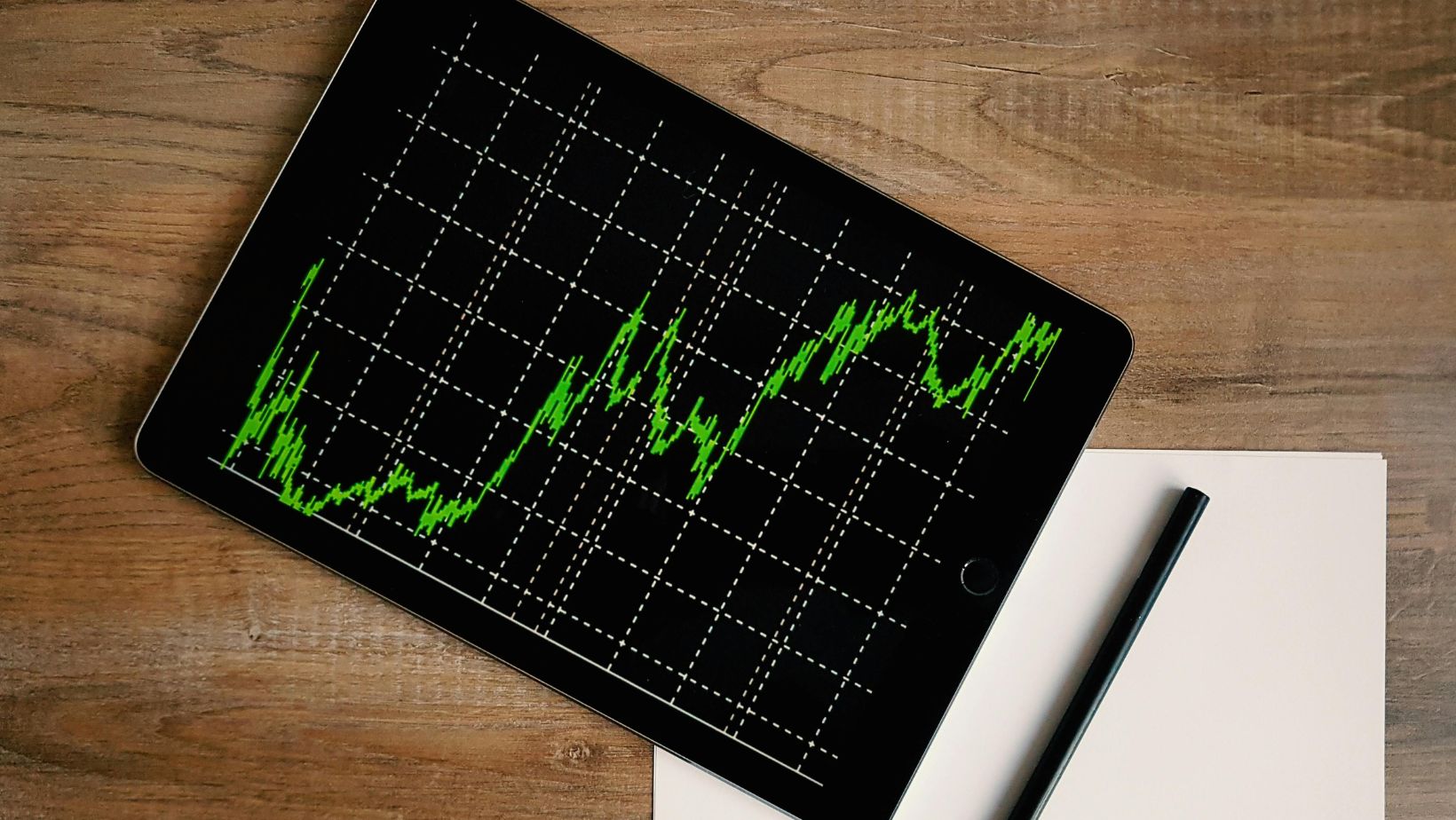
Volatility shakes up everything, from confidence to correlations. For traders, though, it’s not just chaos; it’s movement, and movement creates opportunity. The key is having a plan that makes sense when prices swing wildly.
Understanding Volatility
Volatility is simply how much and how fast prices move. It’s driven by events that surprise the market, such as new inflation data, sudden policy shifts, unexpected earnings, or even wars.
When volatility rises, traders face:
- Wider bid-ask spreads
- Faster reversals
- Correlations breaking down
- Higher emotional pressure
In calm markets, steady trends are your friend. In volatile ones, survival means adapting your position sizing, timing, and mindset.
Commodities vs Index ETFs – The Key Difference
Commodities are tangible: oil, gold, copper, wheat, and natural gas. They respond to real-world supply and demand. Inflation, weather, or conflict can move them dramatically.
Index ETFs represent collections of equities that mirror market performance, such as the S&P 500 or FTSE 100. They provide quick, diversified exposure and can be traded through an index trading broker, much like a single stock.
Both asset classes offer opportunity in turbulence, but they react differently. Commodities often thrive on inflation fears; stock indices swing with sentiment and liquidity.
Why Volatile Markets Can Be A Trader’s Ideal friend
It might not feel that way, but volatility creates mispricing. When everyone’s emotional, assets often move too far in one direction. If you can stay rational, you can trade those extremes effectively.
Here’s why volatility can help you — if managed correctly:
- Clearer breakouts – Once price escapes a range, follow-through tends to be stronger.
- Faster reversion – Overreactions correct quickly, offering repeated entry points.
- Higher reward-to-risk ratios – Larger swings mean more potential upside per trade.
- Frequent setups – More movement means more technical triggers each week.
- Portfolio diversification – Not all assets react the same way; opportunities appear across markets.
Trading Strategies For Commodities
Commodities are volatile by nature, so managing risk is just as important as spotting direction. Here are six approaches that work when markets are unpredictable.
1. Ride Strong Trends
Big moves in commodities often start with macro catalysts, such as supply shocks, policy changes, or inflation surges. Once momentum starts, it can build fast.
What to do:
- Wait for daily or weekly closes beyond key resistance or support.
- Confirm direction with momentum indicators like RSI and MACD.
- Check that volume increases with price; low volume breakouts often fail.
- Use trailing stops to stay in the move while locking in profit.
2. Fade The Extremes
Extreme volatility often pushes prices too far, too fast. Mean reversion traders look for exhaustion.
Watch for:
- Reversal candlestick formations after large spikes
- Divergences between price and momentum indicators
- Volatility contraction following huge candles
- Contrarian sentiment readings (everyone suddenly bullish or bearish)
These setups can offer sharp, quick profits, but never fight a clearly established trend.
3. Spread Trading
Instead of guessing direction, trade relationships. Pair similar commodities and profit from relative changes.
- Long Brent crude, short WTI crude
- Long gold, short silver
- Long corn, short soybeans
- Long copper, short aluminum
Spreads are less exposed to broad market swings and rely more on fundamentals between assets.
4. Event-Driven Setups
Commodities respond to news more than most assets. Key events to watch include OPEC production meetings, crop reports, inventories and stockpile data, and central bank inflation announcements.
Plan ahead. Know when data is due, what the market expects, and how you’ll react to surprises.
5. Combine Macro And Micro Analysis
Zooming out helps. Track inflation trends, currency strength, and interest-rate expectations. For instance, rising inflation usually benefits energy and metals.
6. Manage Exposure Actively
Because commodity markets can swing wildly in hours, risk control is vital.
- Use smaller positions in highly volatile instruments.
- Widen stops to reflect price ranges, but lower your trade size accordingly.
- Avoid adding to losing trades.
- Take partial profits along the way.
Trading Strategies For Index ETFs
Index ETFs give you access to entire markets, ideal for tactical trading or hedging.

They can be volatile, but that volatility also provides structure for well-planned strategies.
1. Swing With The Rhythm
Short-term swings become more pronounced in rough markets. Traders can use that rhythm by focusing on high-probability setups.
Look for:
- Reversal candles near key moving averages
- Oversold RSI readings bouncing back above 30
- Price gaps that quickly fill on heavy volume
- Trendline breaks confirmed by a higher close
Keep positions smaller, and aim for quick trades lasting days rather than weeks.
2. Sector Rotation
In volatile phases, leadership rotates faster than usual. One month it’s energy; the next it’s healthcare or defense. Spotting these transitions early can keep your capital in motion.
Typical patterns include:
- Rising yields helping banks but hurting tech
- Commodity inflation lifting mining and energy ETFs
- Slowdowns boosting defensive names like utilities
- Recovery phases reviving consumer discretionary stocks
You can trade the leaders directly or through sector-specific ETFs to follow momentum.
3. Volatility Breakout Plays
Periods of sideways consolidation after major sell-offs often precede strong directional moves.
The setup:
- Identify a narrowing price range on a 4-hour or daily chart.
- Watch for volume spikes signaling renewed interest.
- Enter when price closes outside the range.
- Use the width of the range to estimate a target.
- Tighten stops once halfway to target.
Breakouts during high volatility tend to extend further than usual, offering attractive reward potential.
4. Hedging And Inverse Exposure
Inverse ETFs rise when markets fall. Holding a small position in one can offset losses in long portfolios. You can also combine volatility-linked ETFs or options to smooth portfolio returns.
Some traders hedge dynamically, reducing exposure when volatility spikes, then re-adding when conditions stabilize.
5. Tactical Long-Term Positioning
Not all strategies need speed. For investors taking a longer view, volatility can be an opportunity to accumulate at discounted prices. Dollar-cost averaging into broad ETFs helps spread risk and lowers emotional stress.
However, even long-term investors can use tactical adjustments, trimming exposure when valuations stretch, then adding back during corrections.
6. Use Correlation Awareness
During high volatility, markets move differently than usual. Stock indices may suddenly correlate with commodities or even cryptocurrencies. Monitoring correlation changes helps you anticipate unexpected swings and avoid overlapping positions.
Managing Risk – The Foundation Of Every Strategy
No strategy works without solid risk control. Think of it as your safety net in a storm.
Key rules worth following:
Size Positions To Volatility
If the average daily range doubles, your trade size should probably halve.
Always Know Your Exit
Define both profit targets and stop levels before entry.
Avoid Over-Trading
More movement doesn’t mean you need more trades. Quality over quantity wins.
Track Emotional Bias
Fear and greed distort judgment fastest when prices move sharply.
Check Trades Weekly
Look for mistakes in discipline, not just direction.
Professional traders often say success is 80 % risk management and 20 % strategy. Volatile markets prove that true.
The Role Of Diversification
Combining commodities and index ETFs can actually make a portfolio steadier. They often react differently to inflation, growth, and interest-rate changes.
| Asset Type | Main Driver | Reaction in Volatility | Typical Role |
| Commodities | Supply and demand, inflation | Can rise when inflation or tension increases | Hedge against currency decline |
| Index ETFs | Corporate earnings, liquidity | Often fall during fear but rebound fast | Broad equity exposure |
| Cash or bonds | Interest rates, policy | Defensive but low-return | Stability during crisis |
| Crypto | Risk appetite, tech sentiment | High volatility | Speculative diversification through cryptocurrency trading online |
Volatility Isn’t The Enemy
Volatility is the stage where skill shows. Commodities and index ETFs both offer opportunity, but they demand structure: clear entries, well-placed stops, and constant awareness of the bigger picture.
The best traders treat volatile markets like tightrope walks: controlled, balanced, and calculated. They know when to step forward and when to pause!






